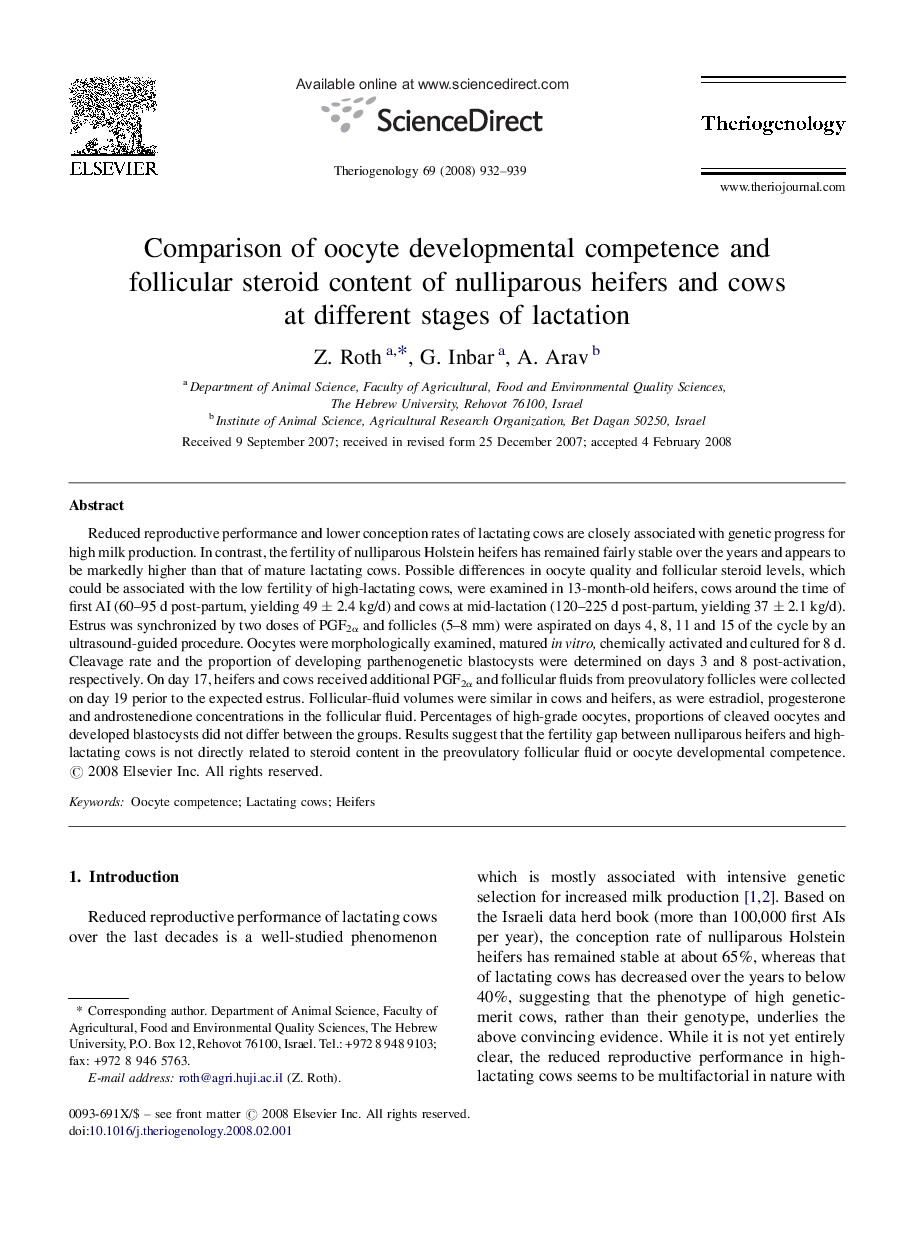| Article ID | Journal | Published Year | Pages | File Type |
|---|---|---|---|---|
| 2098236 | Theriogenology | 2008 | 8 Pages |
Reduced reproductive performance and lower conception rates of lactating cows are closely associated with genetic progress for high milk production. In contrast, the fertility of nulliparous Holstein heifers has remained fairly stable over the years and appears to be markedly higher than that of mature lactating cows. Possible differences in oocyte quality and follicular steroid levels, which could be associated with the low fertility of high-lactating cows, were examined in 13-month-old heifers, cows around the time of first AI (60–95 d post-partum, yielding 49 ± 2.4 kg/d) and cows at mid-lactation (120–225 d post-partum, yielding 37 ± 2.1 kg/d). Estrus was synchronized by two doses of PGF2α and follicles (5–8 mm) were aspirated on days 4, 8, 11 and 15 of the cycle by an ultrasound-guided procedure. Oocytes were morphologically examined, matured in vitro, chemically activated and cultured for 8 d. Cleavage rate and the proportion of developing parthenogenetic blastocysts were determined on days 3 and 8 post-activation, respectively. On day 17, heifers and cows received additional PGF2α and follicular fluids from preovulatory follicles were collected on day 19 perior to the expected estrus. Follicular-fluid volumes were similar in cows and heifers, as were estradiol, progesterone and androstenedione concentrations in the follicular fluid. Percentages of high-grade oocytes, proportions of cleaved oocytes and developed blastocysts did not differ between the groups. Results suggest that the fertility gap between nulliparous heifers and high-lactating cows is not directly related to steroid content in the preovulatory follicular fluid or oocyte developmental competence.
